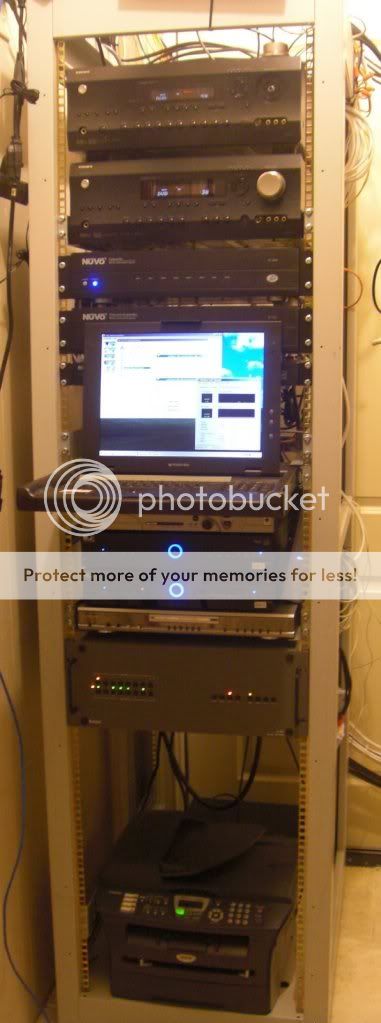I know people wrote about SageTV and Sage media extenders, but what exactly is the storage hardware device, connection cables, and controller?
I use SageTV and can help explain that some. SageTV is a computer based DVR solution. There are Windows, Mac, and Linux flavors, but Windows is the original and most robust platform. You add tuners to the computer (either PCI, USB, or network based tuners) and SageTV will integrate them into it's GUI. You can record TV via the tuners, play back music, pictures, or videos that are ripped to the network as well. You need 1 SageTV Server license to be able to record TV.
Besides the server software, SageTV also has hardware extenders available. These are devices that connect to the network and connect to the TV. It comes with a remote control and it allows you to control all of the Sage functions and browse all your media, schedule recordings, etc. They are popular because they are relatively inexpensive (compared to buying and running a full computer at each TV), are low powered (draw something like 12 watts), and are much more stable than a computer (no tweaks, viruses, OS updates, etc).
You can also use individual computers at each TV location rather than the hardware extenders. Each computer needs its own SageTV Client license to view TV on it. (However the SageTV server license allows you to watch TV on the server computer, so some people use just that one machine).
I personally have two SageTV extenders that I have hooked into my larger audio/video distribution system. This way I don't need an extender/computer at every potential TV location. Rather there are generally no more than two groups of people wanting to watch TV at the same time, so I can have just two devices. The bigger A/V distribution system allows me to view those two extenders from any TV in the house.
That being said, many people could be well served by simply having a SageTV server and an extender at each TV and not having the additional A/V distribution system. After all, with SageTV I can watch and record TV, play any ripped music on the network, watch any other media (like ripped DVDs, or home videos) on the network, and even watch on-line videos (from YouTube, Hulu, Netflix, etc). That is generally all people want to do anyway.
The only advantage that my a/v distribution system offers is the ability to hook in other a/v devices like a DVD changer (vs ripped DVDs), game stations (like our Wii), or other devices (like an iPod). But the ability to add those extra sources came with a pretty large price tag.

